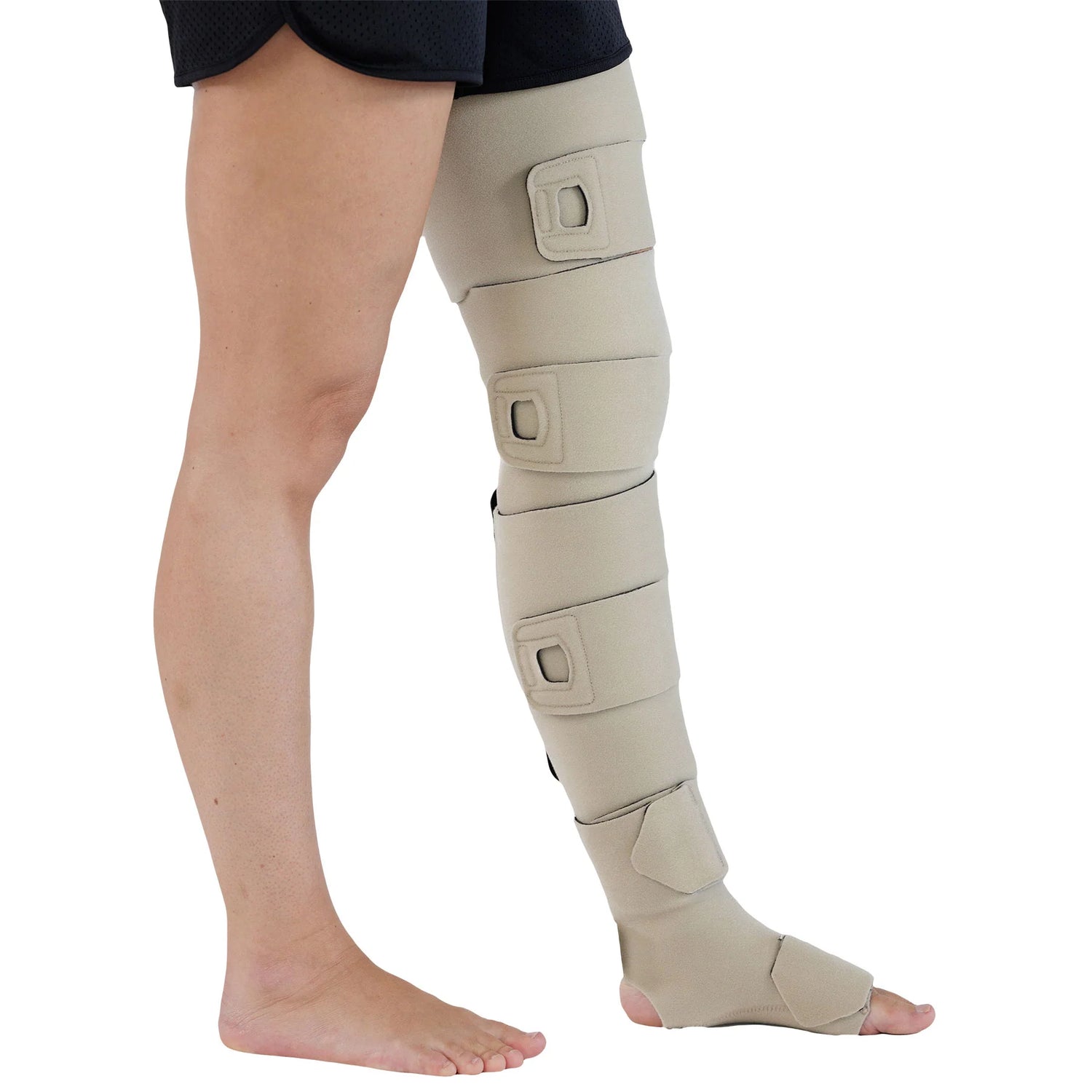Living with lymphedema poses unique challenges that often require multifaceted management strategies. Compression garments and bandages, play a pivotal role in alleviating symptoms and promoting better quality of life for individuals navigating this condition. In this blog, we delve into the significance of compression garments and bandages for lymphedema and explore how they contribute to comprehensive lymphedema management.
What is Lymphedema?
Lymphedema is a chronic condition characterized by the accumulation of lymphatic fluid, usually in the arms or legs, due to a compromised lymphatic system. This impairment can result from surgery, radiation therapy, infection, trauma, or genetic factors. Lymphedema often leads to swelling, discomfort, decreased mobility, and an increased risk of infections.
The Role of Compression
Compression devices are available in various forms, including sleeves, stockings, gloves, non-elastic binders, and rolls of bandages. Compression garments are specialized clothing designed to apply controlled pressure to affected areas, which are tailored to meet the unique needs of individuals with lymphedema or edema. Here’s how compression garments assist in lymphedema management:
1. Lymphatic Drainage:
Compression bandages and garments create structural support for the skin and provide a prescribed external pressure on the affected limbs. This compression helps to encourage the movement of lymphatic fluid towards functional lymph nodes and mimics the natural action of healthy lymphatic vessels, thus, facilitating drainage and reducing fluid buildup.
2. Swelling Reduction:
By compressing the tissues, compression garments effectively control swelling, alleviating discomfort and improving limb shape and function. This reduction in swelling not only restores fluid balance and physical health but also promotes psychological well-being by regaining self-confidence and body image.
3. Prevention of Complications:
Consistent use of compression garments may help prevent complications associated with lymphedema, such as cellulitis and lymphangitis. By maintaining optimal fluid balance and tissue integrity, compression garments may mitigate the risk of infections and other secondary complications, fostering long-term health and well-being.
4. Supportive Therapy:
Beyond fluid management, compression garments offer valuable support to weakened or damaged tissues. They provide stability to skin, muscles and joints, enhancing mobility and promoting better functional outcomes for individuals with lymphedema.
Choosing the Right Compression Garments
Selecting the appropriate compression garment is crucial for optimal management of lymphedema. Factors to consider include:
-Compression Level: Garments are available in different compression levels, ranging from mild to high, dependent on the severity of lymphedema and individual needs.
-Fit and Comfort: Proper fit is essential for effective compression therapy. Garments should be comfortable yet snug, ensuring consistent pressure distribution without causing skin breakdown, constriction or discomfort.
-Material and Design: High-quality, breathable fabrics are preferred to prevent skin irritation and promote airflow. Seamless designs and moisture-wicking properties enhance comfort and compliance.
Integrating Compression Therapy into Lymphedema Management
While compression bandages and garments are a cornerstone of edema management, they are most effective when integrated into a comprehensive treatment plan. This plan may include:
-Manual Lymphatic Drainage (MLD): A specialized massage technique that restores lymphatic circulation, compression therapy helps to maintain the gains made in MLD by providing an external structure to support loose skin, promoting fluid movement and adjunct reduction of swelling.
-Exercise and Movement: Gentle exercise, such as walking, swimming, and yoga, can help improve lymphatic flow and overall mobility, compression bandages and garments enhance the effectiveness of movement.
-Skin Care: Proper skin hygiene and moisturization are essential for individuals with lymphedema to prevent infections and skin breakdown.
Conclusion
Compression bandages and garments serve as indispensable tools in the management of lymphedema, offering relief from swelling, promoting lymphatic drainage, and supporting overall well-being. When used in conjunction with other therapeutic modalities, compression therapy forms an integral part of a holistic approach to lymphedema care. By understanding the role of compression options and incorporating them into a comprehensive treatment plan, individuals with edema or lymphedema can reclaim control over their health and live fuller, more active lives.


